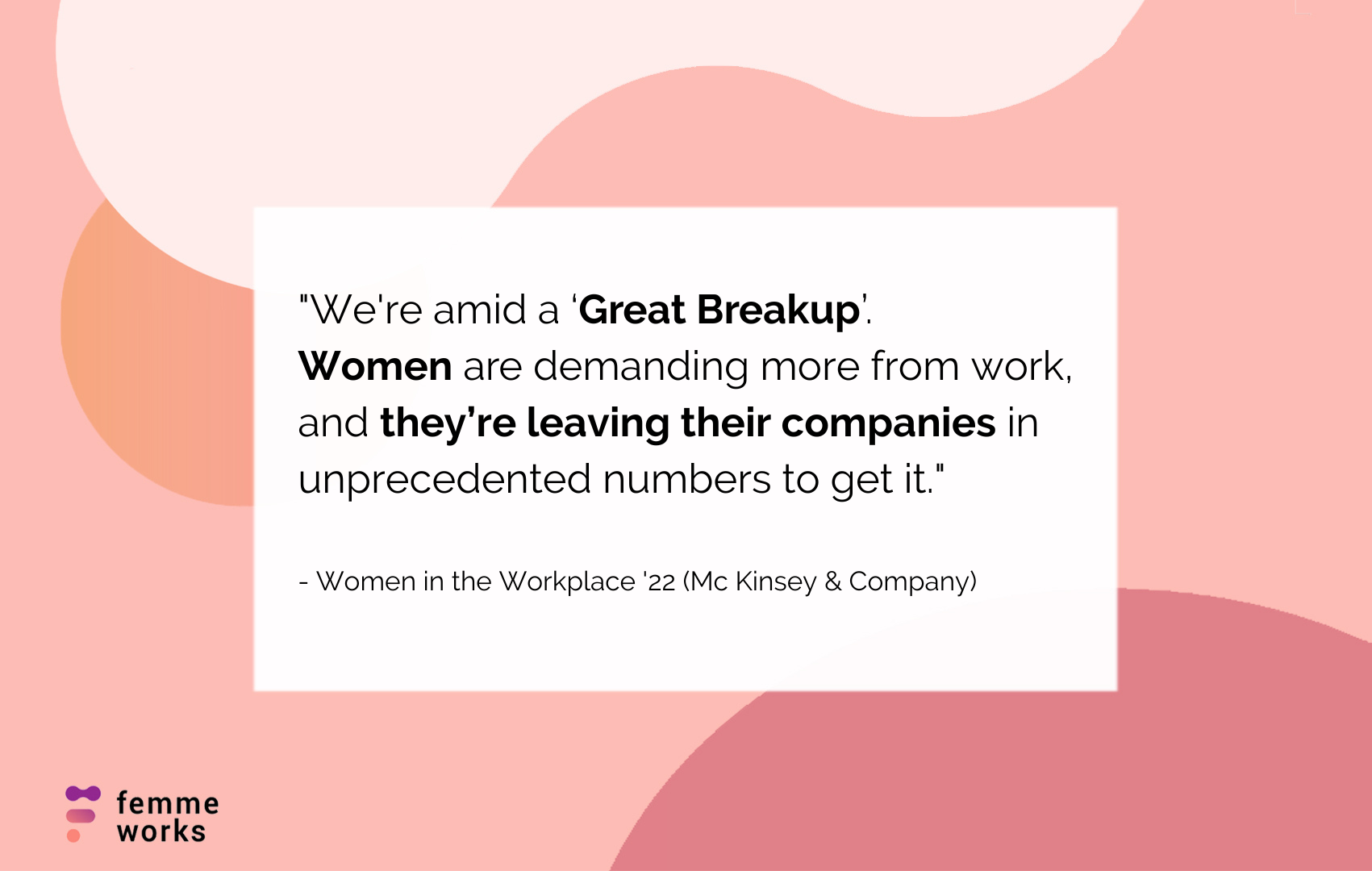
29 nov 5 reasons for the lack of women in top positions
Women in top positions are leaving their companies at the highest rate we’ve ever seen, according to new data from McKinsey & Company. The report ‘Women in the Workplace’¹, which is the largest study of women in corporate America, recently revealed that we’re amid a ‘Great Breakup’. What is going on? Why would women in top positions step away from their companies? And why are women still outnumbered in leadership roles?
Reason 1: Women in top positions want to, but they face more obstacles
Today, nearly 60% of university degrees are awarded to women,² suggesting there is no shortage of qualified women entering the pipeline. And to directly overcome the first prejudice: women are just as ambitious as men.³
Nevertheless, the report states that women are more likely to experience microaggressions in the workplace. Think of everyday sexism and racism, undermining authority, or being mistaken for someone more junior. Whether intentional or unintentional, it will be harder to move forward.
Reason 2: Women leaders are judged by different criteria
‘Women in the Workplace’ notes that far fewer women than men are being promoted to managerial roles. For every 100 men who are promoted from entry-level to manager positions, only 87 women are promoted.
The statistics show that 37% of women leaders surveyed reported having had a co-worker who took credit for their idea, versus 27% of men leaders. As a result, their ability to advance within a company is discouraged and fewer women are promoted to higher levels.
Reason 3: Companies fail in offering flexible work
Companies often fall short in meeting the specific needs of women in top positions. The option for flexible hours and remote work turns out to be a prerequisite for many. At our executive search agency with a focus on gender diversity, we see this over and over again.
The numbers from the report tell that only one in ten women wants to work mostly on-site, and many women point to remote and/or hybrid options as one of their top reasons for joining an organization. Companies interested in putting more women on a leadership track might want to take special note of this finding.
Reason 4: The lack of a future perspective and career development
‘How many women are there actually in the management team’? In our agency, we regularly get this question from our candidates. It is likely to happen that the attention for a certain company drops if the gender balance within the higher layers isn’t diverse.
‘Women in the Workplace’ emphasizes the importance of good people management. Less than half say their manager shows interest in their career and helps them manage their workload. The lack of a future perspective and career development isn’t giving the necessary motivation to start a job at a high level with a lot of responsibility.
Reason 5: Companies are not investing in Diversity, Equity and Inclusion (DEI)
Women care about the values and work culture of a company. ‘Women in the Workplace’ shows that over the last years women are more than 1,5 times as likely as men at their level to have left a previous job because they wanted to work for a company that was more committed to Diversity, Equity and Inclusion (DEI).
An active approach toward gender diversity in the workplace can be measured by the presence of a diversity program to structurally bring (the importance of) diversity to the attention of the management board. Evidently, the actual male-female in the board remains the best indicator.
The bottom line about women in leadership roles
The bottom line is that if companies are not willing to invest in gender diversity and culture they are not only risking their current female talent, but also the next generation. To reverse the ‘Great Breakup’ companies should focus on attracting and retaining women in top positions – which will lead to a better workplace for everyone.
Do you need help with the recruitment of female (executive) candidates within your organization? Feel free to contact us.
Click here to follow me on LinkedIn.
1. https://www.mckinsey.com/featured-insights/diversity-and-inclusion/women-in-the-workplace
2. https://nces.ed.gov/programs/digest/d17/tables/dt17_318.10.asp?current=yes3. https://hbr.org/2011/11/collaborations-hidden-tax-on-women
3. https://hbr.org/2011/11/collaborations-hidden-tax-on-women

